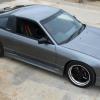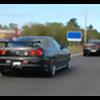Track Car Help
Announcements
-
Similar Content
-
Latest Posts
-
By The king 2.0 · Posted
Hi guys . Can someone help me I bought an Android screen for my Nissan fuga but it won't turn on -
My guesstimate, with no real numbers to back it up, is it won't effect it greatly at all.its not a huge change in position, and I can't see the air flow changing from in turbulence that much based on distance, and what's in front of it. Johnny and Brad may have some more numbers to share from experience though.
-
Which solenoid? Why was it changed? Again, why was this done? ...well, these wear..but ultimately, why was it changed? Did you reset the idle voltage level after fitment? I'm just a tad confused ~ the flash code doesn't allude to these items being faulty, so in my mind the only reason to change these things, would be some drive-ability issue....and if that's the case, what was the problem? Those questions aside, check if the dropping resistor is OK ...should be 11~14 ohms (TCU doesn't throw a flash code for this) ~ also, these TCU designs have full time power (to keep fault code RAM alive), and I think that'll throw a logic code (as opposed to the 10 hardware codes), if that power is missing (or the ram has gone bad in the TCU, which you can check..but that's another story here perhaps).
-
Question for people who "know stuff" I am looking at doing the new intake like the one in the picture (the pictured is designed for the OEM TB and intake plenum), this design has the filter behind the front bar, but, the filter sits where the OEM duct heads into the front bar, and the standard aperture when the OEM ducting is removed allows the filter to pulled back out of the front bar into the engine bay for servicing, a simple blanking plate is used to seal the aperture behind the filter This will require a 45° silicone hose from the TB, like the alloy pipe that is currently there, to another 45° silicone hose to get a straight run to the aperture in the front bar Question: how will it effect the tune if I move the MAF about 100-150mm forward, the red is around where my MAF is currently, and the green would be where it would end up Like this This is the hole the filter goes through Ends up like this LOL..Cheers
-
Despite the level up question, actually I do know what that is....it is a pressure sender wire. So check out around the oil filter for an oil pressure sender, or maybe fuel pressure near the filter or on the engine. Possibly but less likely coolant pressure sensor because they tend to be combined temp/pressure senders if you have one. Could also be brake pressure (in a brake line somewhere pre ABS) but maybe I'm the only one that has that on a skyline.
-








Recommended Posts
Create an account or sign in to comment
You need to be a member in order to leave a comment
Create an account
Sign up for a new account in our community. It's easy!
Register a new accountSign in
Already have an account? Sign in here.
Sign In Now